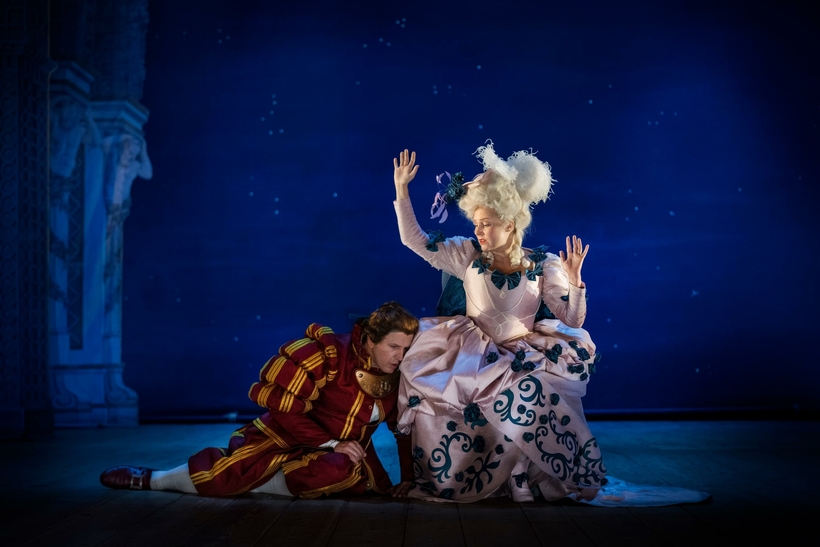How do you retrofit an heirloom opera house? Easy. Spiff up the shell, toss the innards, and install state-of-the-art conveniences where only the staff will see them. Happily, the caretakers at the Drottningholm Court Theatre (1766), seven miles from central Stockholm, have taken a road much less traveled, preserving in immaculate working order all the nominally obsolete stage gadgetry that is the soul of Baroque theatrical illusion.Take the so-called chariot-and-pole system, designed by ship carpenters, which by means of ropes and drums and pulleys can execute a total set change in four seconds.
Ingmar Bergman, for one, was so enchanted that in the 1970s he dreamed of filming Mozart’s masonic fairy tale The Magic Flute at Drottningholm, but wound up having to custom build a faithful replica in a studio instead. Today’s nimbler movie crews can bob and weave around the original structure in ways Bergman’s could not, as you can see in the video of Antonio Vivaldi’s Il Giustino (1724), captured live on August 18, 2022.
Like the operas of his nearly exact contemporary George Frideric Handel, Vivaldi’s lay forgotten for centuries. But while Handel’s have seen a triumphant renaissance in recent generations, Vivaldi’s equally ravishing and no less numerous dramatic œuvre remains mostly in eclipse. This production, his first on a Swedish stage, proved a festive occasion.
Kudos first of all to George Petrou, the rare conductor who also directs, and whose astonishing credits include Handel, Kiss Me, Kate, and Sweeney Todd at the Acropolis in his native Athens. In the intimacy of Drottningholm, he unfurls zesty rococo stage action that sparkles with subtle contemporary inflections: this is theater, not an academic exercise.

With the Drottningholm’s top-flight period band at his fingertips, Petrou paints, in music, pictures that are even richer—ever vibrant, tangy, alight with dramatic sparks. Sublime detail abounds: the flourish of drums and trumpets, wind soli by turns blithe and mournful, the intoxicating buzz of the archlute. Perhaps most astonishing of all is the ethereal ping of a psaltery—that seldom heard cousin of the dulcimer—spangling the single interlude it accompanies in a web of starlight. For good measure, Petrou ingeniously adds a sound effect Vivaldi seems not to have foreseen: the “weeping” sound of a Baroque rain wheel, deployed front and center for all to see as the hero pictures his heart dissolving in tears.
Giustino, or Justin, born circa 450 in what we now call the Common Era, was a peasant lad who wound up founding an imperial East Roman dynasty. If Vivaldi’s convoluted libretto hints at his history, its chief function is to whip the cast into states of extreme emotion. The Ukrainian countertenor Yuriy Mynenko rises to his many occasions with bravura, never more so than when plunging from his molten-gold middle register to the growl of a raging tiger.
In typical Baroque fashion, Vivaldi puts a handful of other principals through equally grueling paces. I’ll single out the laser-sharp, laser-bright soprano Johanna Wallroth as Leocasta, a princess Giustino rescues from a bear—and also the tenor Juan Sancho as the scheming Vitaliano, Giustino’s long-lost royal brother, who tears through his steeplechases with such abandon as to take your breath away.
Il Giustino is available for streaming on the Opera Vision Web site until June 26, 2024, as well as on YouTube
Matthew Gurewitsch writes about opera and classical music for AIR MAIL. He lives in Hawaii

